In Japan, there is intense competition among farmers to produce delicious and beautiful fruits, leading to some of the most expensive fruit in the world. From luxurious Yubari King Melons to rare Ruby Roman Grapes, these high-end fruits are highly sought after for their exceptional quality and limited availability.
Join me as we explore the top 7 most expensive fruits in Japan and uncover the fascination behind these exclusive delicacies.
Key Takeaways:
- Japan is home to some of the most expensive fruit in the world, known for its exceptional quality and limited availability.
- Luxury fruits like Yubari King Melon, Ruby Roman Grape, and Sekai-ichi Apple are highly prized for their exquisite taste and flawless appearance.
- Japanese fruits are often seen as gifts for special occasions or as a way to indulge in the finest culinary experiences.
- These high-end fruits showcase the craftsmanship and dedication of Japanese farmers, resulting in premium produce.
- Exploring the world of luxury fruits in Japan offers a unique insight into the country’s rich agricultural traditions and culinary culture.
Yubari King Melon: The Priciest Melon in the World
The Yubari King Melon is an exquisite fruit that is synonymous with luxury in Japan. Renowned for its exceptional flavor, high sugar content, and flawless appearance, it is considered the most expensive fruit in the country. With its regal name and extraordinary price tag, the Yubari King Melon is truly a treasure among luxury fruits in Japan.
Yubari King Melon is a hybrid melon variety that originated in Yubari, a small town located in Hokkaido, Japan. The melon’s cultivation requires strict adherence to meticulous farming practices, ensuring optimal sweetness and juiciness. Each Yubari King Melon is carefully hand-picked and meticulously inspected to guarantee uncompromising quality.
| Appearance | Price Range (USD) |
|---|---|
| Oval-shaped, smooth rind with a vibrant orange color | $100 – $45,000 |
Yubari King Melons are often presented as luxurious gifts for special occasions, such as weddings, business deals, or birthdays. Due to their exclusivity and desirability, they are highly sought after by fruit enthusiasts and collectors alike. The Yubari King Melon’s premium price reflects its status as a symbol of prestige and opulence in Japanese culture.
Why the High Price?
The high cost of Yubari King Melons can be attributed to several factors. Firstly, limited supply significantly drives up demand, as only a small number of melons meet the stringent criteria for top-grade quality. Additionally, the intensive labor, attention to detail, and specialized techniques required to cultivate these melons contribute to their elevated price point.
“The Yubari King Melon is a true testament to the artistry and dedication of Japanese farmers. Its remarkable sweetness and perfect appearance make it a truly exceptional fruit.” – Fruit connoisseur, Takeshi Yamamoto
The Yubari King Melon’s exceptional taste and aesthetic appeal continue to captivate fruit enthusiasts around the world. While its price may seem extravagant, the experience of savoring this exclusive delicacy is unparalleled.
Watermelon: Expensive, Aesthetic, and Inedible
When it comes to extravagant fruits in Japan, watermelons hold a special place. Not only are they renowned for their delicious taste, but they also captivate with their striking aesthetics. One cannot help but be amazed by the unique shapes and colors of high-end watermelons, making them a popular choice among collectors and enthusiasts.
One of the most coveted varieties is the Densuke watermelon, famous for its rare black skin and perfectly square shape. These watermelons are meticulously cultivated in the Hokkaido region and are known to fetch exorbitant prices at the expensive fruits market in Japan. In fact, a single Densuke watermelon can cost up to $6,000 USD, making it a symbol of luxury and exclusivity.
However, what makes these watermelons truly fascinating is their inedibility. Despite their high price, Densuke watermelons are not meant to be eaten. Instead, they serve as decorative pieces or status symbols, often displayed prominently in upscale restaurants or homes as a statement of elegance and refinement.
“The Densuke watermelon is like a work of art that enhances the aesthetic appeal of any space it occupies. Its unconventional appearance and limited availability make it a prized possession for collectors and fruit enthusiasts alike.” – Fruit expert Hiroshi Suzuki
While some may find it puzzling to invest in a fruit that cannot be enjoyed as a refreshing treat, the allure of these premium watermelons lies in their rarity and exclusivity. Owning a Densuke watermelon is not just about the taste; it is about possessing a piece of Japanese agricultural heritage and appreciating the meticulous craftsmanship behind its cultivation.
The Densuke Watermelon: At a Glance
| Aesthetic Qualities | Price Range (USD) |
|---|---|
| Rare black skin and square shape | $6,000+ |
| Inedible decorative fruit | |
| Symbol of luxury and exclusivity |
While the Densuke watermelon stands out as the pinnacle of expensive and aesthetic watermelons, there are other high-end varieties available in the Japanese market. These include the “Crown Melon,” adored for its sweetness and elegant appearance, and the “Torashizuku Watermelon,” known for its distinctive tiger-like stripes. Each of these luxury watermelons adds a touch of grandeur to any occasion and elevates the dining experience with their visual appeal.
Next, we will dive into the world of another extraordinary fruit – the Ruby Roman Grape, a true gem among luxury fruits in Japan.
Ruby Roman Grape: A Grape Worth $460 Per Grape
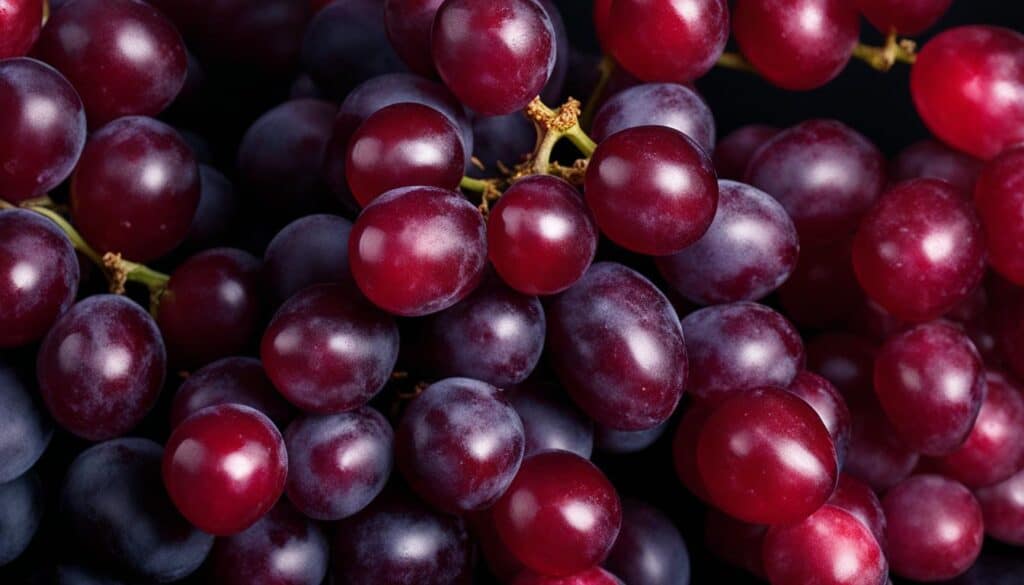
When it comes to luxury fruits in Japan, the Ruby Roman Grape stands in a league of its own. These exquisite red grapes hail from Ishikawa Prefecture and are renowned for their impressive size and exceptional sweetness. Each grape undergoes strict inspection and certification processes to ensure its unrivaled quality.
What sets the Ruby Roman Grape apart is not only its sumptuous taste but also its extraordinary price tag. In fact, a single grape can cost a staggering $460 USD. This makes the Ruby Roman Grape one of the priciest fruits not just in Japan, but in the world.
“The Ruby Roman Grape embodies the epitome of luxury when it comes to fruits, captivating both the eyes and taste buds of discerning fruit enthusiasts.”
These gems of the vine are highly sought after by those who appreciate the finer things in life. Their luscious texture and high sugar content make them a true delicacy, and their limited availability adds to their exclusivity and allure.
While the exact origins of the Ruby Roman Grape can be traced back to the late 20th century, it was only in 2008 that these remarkable grapes were officially deemed worthy of their unique name. Since then, they have continued to captivate fruit lovers and connoisseurs around the world with their unparalleled quality and astronomical price point.
- Large size and impeccable appearance.
- High sugar content, resulting in a delightful sweetness.
- Strict inspection and certification processes ensure superior quality.
- Rarity and limited availability contribute to their exclusivity.
The Price of Excellence: $11,000 for a Bunch of Grapes
It’s not just individual Ruby Roman Grapes that command jaw-dropping prices. Entire bunches of these luxurious fruits have been known to fetch astounding sums at auction.
| Year | Price (USD) |
|---|---|
| 2008 | $11,000 |
| 2016 | $8,200 |
| 2020 | $7,400 |
As seen in the table, the price for a bunch of Ruby Roman Grapes can reach remarkable heights, reflecting the fervent demand and allure of these premium fruits.
Whether enjoyed as a symbol of celebration or indulged in as a luxurious treat, the Ruby Roman Grape embodies the essence of luxury fruits in Japan. Its incredible size, exceptional taste, and unparalleled price make it a true treasure among connoisseurs of high-end delicacies.
Mango: The Perfectly Shaped and Labor-Intensive Fruit
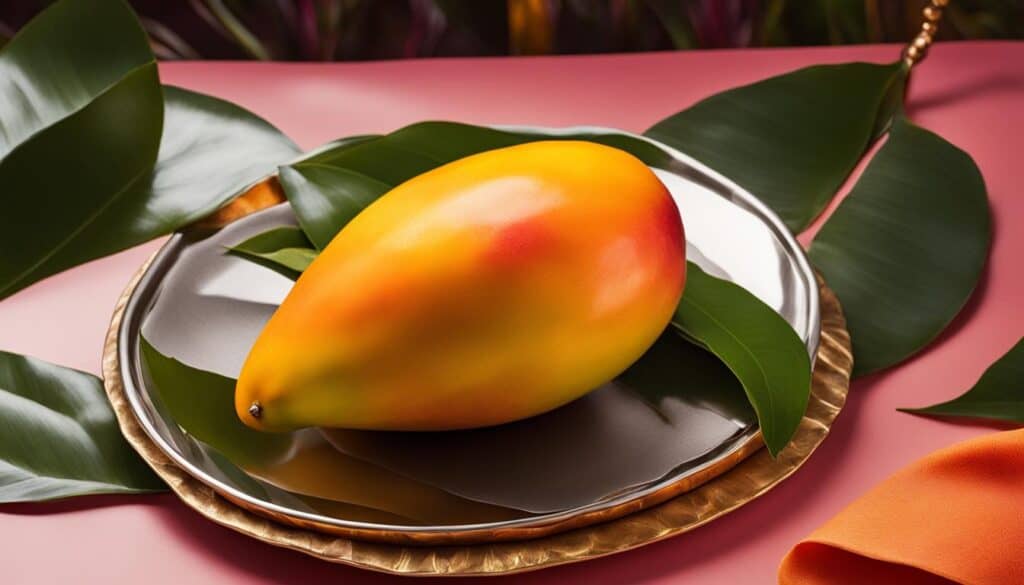
When it comes to luxury fruits in Japan, the meticulously grown Taiyo no Tamago mangoes from Miyazaki Prefecture stand out. These apple-shaped mangoes are a true labor of love, requiring intense dedication and care to achieve their unique shape and exquisite flavor. With their distinct taste and exceptional quality, these high-end mangoes are highly sought after in the expensive fruits market in Japan.
What sets the Taiyo no Tamago mangoes apart is the intricate process they undergo to ensure perfection. The skilled farmers meticulously hand-shape each mango, allowing them to develop into the iconic apple-like form that distinguishes them from other mango varieties. This labor-intensive method ensures that every mango meets the stringent standards set by luxury fruits in Japan.
“The Taiyo no Tamago mangoes are the epitome of craftsmanship and attention to detail. We carefully cultivate each fruit, nurturing them to perfection and giving them their distinctive shape,” says Hiroshi Tanaka, a renowned mango farmer from Miyazaki Prefecture.
Due to their unique qualities and limited availability, these luxury mangoes come with a hefty price tag. A single Taiyo no Tamago mango can be valued at up to $3,744 USD, making it one of the most expensive fruits in the Japanese market.
With their exceptional taste, perfect shape, and labor-intensive cultivation process, Taiyo no Tamago mangoes have become a symbol of opulence and extravagance. These high-end fruits in Japan are not only a treat for the taste buds but also a testament to the dedication and expertise of Japanese farmers.
Apple: The Sekai-ichi Apple Sells for $21 Each
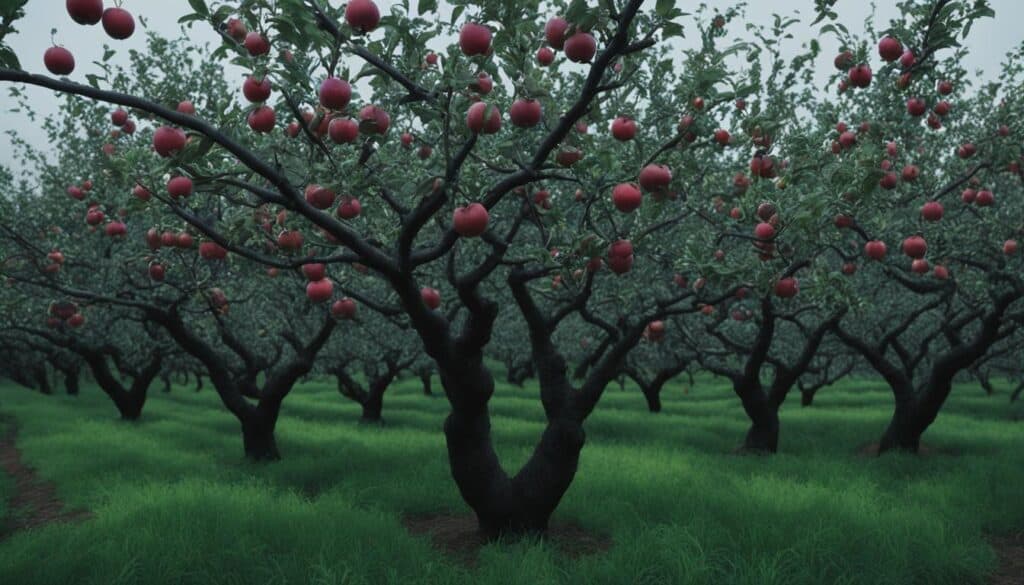
The Sekai-ichi Apple, also known as the world’s number one apple, is truly a luxury fruit in Japan. Prized for its impressive size and delectable flavor, this apple exemplifies the pinnacle of quality and taste. Each Sekai-ichi Apple can weigh up to two pounds, making it a true heavyweight in the fruit world.
What sets the Sekai-ichi Apple apart from other varieties is its exquisite flavor profile. With a perfect balance of sweetness and tartness, biting into a Sekai-ichi Apple is a delightful experience for the senses. Whether enjoyed on its own, used in mouthwatering desserts, or incorporated into savory dishes, this apple never fails to impress.
However, such exceptional quality and flavor come at a price. In the exclusive fruits market of Japan, a single Sekai-ichi Apple can command a hefty price tag of around $21. This reflects the rarity and desirability of this luxurious fruit among discerning consumers.
If you have a penchant for indulging in exquisite flavors and exploring the world of luxury fruits, the Sekai-ichi Apple is an absolute must-try. Its exceptional size, delicious taste, and reputation as the world’s finest apple make it a remarkable culinary experience that is worth every penny.
The Sensational Sekai-ichi Apple Experience
When it comes to luxury fruits in Japan, the Sekai-ichi Apple stands in a league of its own. Here are some incredible facts about this exceptional fruit:
“The Sekai-ichi Apple is the epitome of luxury and finesse. Its remarkable size, delightful flavor, and prestigious reputation make it a true gem in the world of fruit.”
- Size: Weighing up to two pounds, the Sekai-ichi Apple is a heavyweight in the apple kingdom.
- Flavor: With a perfect balance of sweetness and tartness, this apple offers a taste sensation that is out of this world.
- Exclusivity: The limited availability of Sekai-ichi Apples adds to their desirability, making them a highly sought-after luxury fruit in Japan.
- World-renowned: Renowned as the number one apple globally, the Sekai-ichi Apple has garnered a reputation for being the epitome of apple perfection.
Indulge in the luxury of the Sekai-ichi Apple and experience the exquisite flavors that have captivated fruit enthusiasts around the world.
| Attribute | Description |
|---|---|
| Origin | Japan |
| Weight | Up to two pounds |
| Price | Around $21 each |
| Taste | Perfect balance of sweetness and tartness |
Strawberry: Rare and Expensive Gems
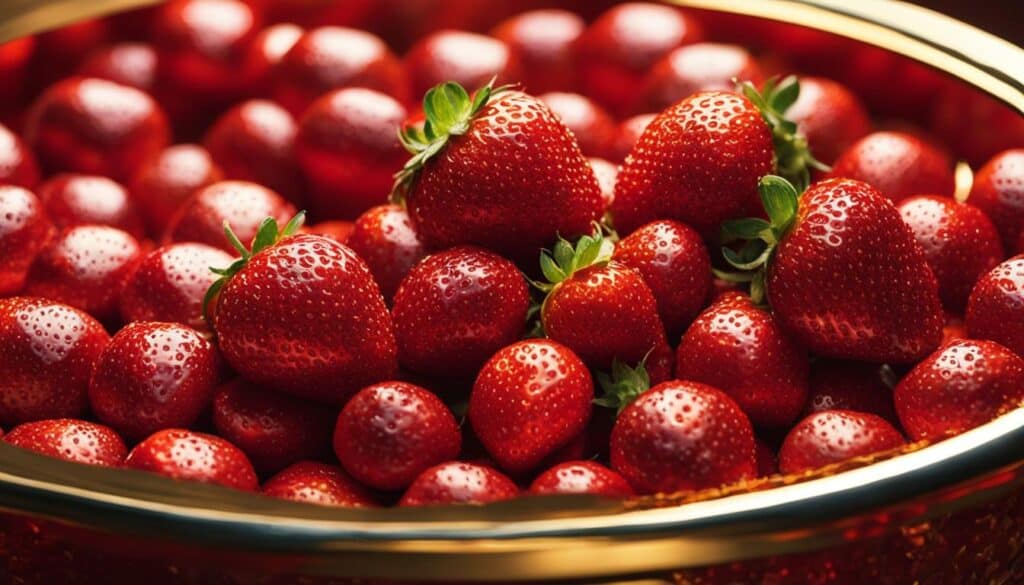
When it comes to fruits, Japan’s love affair with strawberries is truly remarkable. With over 300 types of strawberries grown through crossbreeding, these luscious berries have become a symbol of luxury in the country. Renowned for their exceptional taste and exquisite appearance, Japanese strawberries command high prices in the expensive fruits market.
The rarest and most coveted among them is the White Jewel Strawberry. With its lustrous white color and delicate sweetness, this berry stands out from the crowd. Each White Jewel Strawberry can cost up to $10, making it a true gem among luxury fruits in Japan.
Another sought-after variety is the Bijin Hime Strawberry. Known for its beautiful shape, vibrant red color, and intense flavor, these strawberries are a popular choice for gifting and special occasions. A bunch of Bijin Hime Strawberries can fetch prices ranging from $4,000 to $4,500, cementing their status as one of the priciest fruits in Japan.
Comparison of Strawberry Varieties:
| Strawberry Variety | Price per Berry | Price per Bunch |
|---|---|---|
| White Jewel Strawberry | $10 | N/A |
| Bijin Hime Strawberry | N/A | $4,000 – $4,500 |
These high-end strawberries are carefully cultivated using advanced farming techniques and meticulous attention to detail, resulting in an unmatched flavor profile and exceptional quality. Their exclusivity and limited availability contribute to their appeal as luxury fruits in Japan, attracting both locals and international connoisseurs.
Cherry: Yamagata’s Expensive Delicacy
When it comes to expensive fruits in Japan, Yamagata Prefecture shines with its renowned cherries. One particular variety, the Sato Nishiki cherry, stands out for its exceptional quality, long shelf life, and incredible flavor. Considered a top-priced fruit, these cherries can command prices of up to $7 per cherry, making them a highly sought-after delicacy in the luxury fruits market of Japan.
The Sato Nishiki cherry is meticulously cultivated in Yamagata Prefecture, which has the perfect climate and soil conditions for cherry orchards. The cherries are handpicked at the peak of their ripeness, ensuring the best quality and flavor. Known for their deep red color and firm texture, these cherries are a visual delight for fruit connoisseurs.
The exquisite taste of the Sato Nishiki cherry is what truly sets it apart. With a perfect balance of sweetness and tartness, each bite bursts with juicy goodness. Whether enjoyed on their own or used in gourmet recipes, these cherries elevate any culinary experience to new heights.
“The Sato Nishiki cherry is a masterpiece of nature and craftsmanship. Its exquisite flavor and premium quality make it a true luxury fruit in Japan.” – Fruit connoisseur
Due to their limited availability and high demand, Sato Nishiki cherries are considered a luxury fruit in Japan. They are often gifted on special occasions, such as weddings or business meetings, and are a symbol of generosity and appreciation. The allure of these top-priced fruits is not just their price tag but the experience they offer, allowing consumers to indulge in the finest flavors nature has to offer.
| Key Characteristics | Price | Availability |
|---|---|---|
| Exceptional quality | $7 per cherry | Limited |
| Long shelf life | ||
| Incredible flavor |
The Fascination of Expensive Japanese Fruits
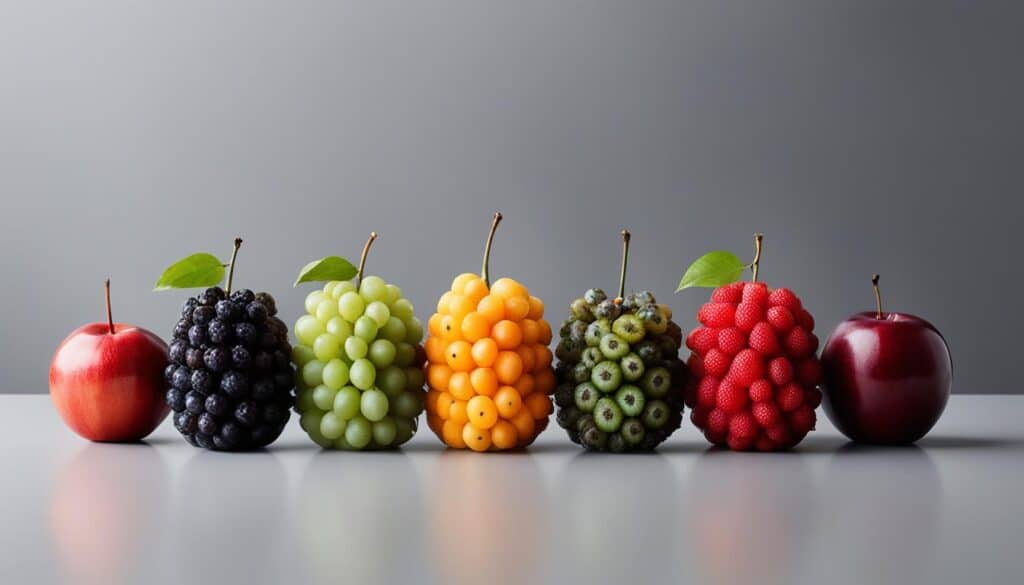
Japanese fruits are renowned for their exceptional quality, rarity, and extraordinary prices. These luxury fruits embody the pinnacle of agricultural craftsmanship and dedication that Japanese farmers have perfected over generations. The meticulous cultivation methods, limited availability, and unique traits of these fruits contribute to their exclusivity and high-end status in the market.
The allure of luxury fruits in Japan goes beyond their extraordinary taste and appearance. Many people in Japan view these fruits as more than just a delicacy; they are considered as gifts for special occasions, symbols of appreciation, and a way to indulge in the finest culinary experiences.
When it comes to luxury fruits in Japan, there is an extensive selection of high-priced delicacies to choose from. From the prized Yubari King Melon, Ruby Roman Grape, to the meticulously grown taiyo no tamago mango, each fruit offers a unique sensory experience that is unparalleled in quality.
Let’s take a closer look at some of the most exclusive and expensive fruits that Japan has to offer:
| Fruit | Description | Price Range |
|---|---|---|
| Yubari King Melon | Known for its exceptional sweetness and flawlessly round shape, the Yubari King Melon is the epitome of luxury fruits. | $1,000 – $45,000 |
| Ruby Roman Grape | These large, red grapes are meticulously cultivated and certified for their premium quality, making them one of the priciest fruits in Japan. | $100 – $460 per grape |
| Taiyo no Tamago Mango | Grown to perfection in Miyazaki Prefecture, these apple-shaped mangoes require intense labor and offer a uniquely exquisite taste. | $100 – $3,744 |
| Sekai-ichi Apple | Recognized as the world’s number one apple, the Sekai-ichi Apple stands out for its immense size and incredible flavor. | $21 per apple |
| White Jewel Strawberry | With its rare white color and exquisite sweetness, the White Jewel Strawberry commands a high price and is a symbol of luxury. | $10 per berry |
These luxury fruits are not just ordinary produce; they represent the perfect fusion of craftsmanship, dedication, and nature’s finest offerings. Their limited supply, impeccable taste, and visual appeal make them highly sought-after in Japan and around the world.
Conclusion
Japan’s luxury fruits are renowned for their unrivaled quality, extraordinary flavor, and limited availability, making them the epitome of exquisite indulgence. From the renowned Yubari King Melons to the prestigious Ruby Roman Grapes, these fruits exemplify the unwavering dedication and expertise of Japanese farmers. The exorbitant prices they command are a testament to their rarity and desirability in the exclusive market of luxury fruits in Japan.
The pursuit of perfection and attention to detail are evident in every bite of these costliest fruits. Each fruit is meticulously cultivated to ensure flawless appearance, unparalleled sweetness, and exceptional taste. The exquisite craftsmanship and unwavering commitment of Japanese farmers shine through, making these luxury fruits worth every penny.
Whether presented as a prestigious gift or savored as a personal indulgence, Japan’s luxury fruits offer a sensory experience like no other. The exquisite flavors and unique characteristics of these top-tier fruits have captured the imaginations of fruit connoisseurs and discerning palates around the world. Truly, the luxury fruits market in Japan is a testament to the nation’s unparalleled dedication to culinary excellence.
FAQ
What is the most expensive fruit in Japan?
The most expensive fruit in Japan is the Yubari King Melon, known for its high sugar content and flawless appearance.
How much does a top-grade Yubari King Melon cost?
A top-grade Yubari King Melon can fetch prices up to $45,000 USD.
Are Japanese watermelons edible?
Japanese watermelons, such as the square and black skinned Densuke watermelons, are purely decorative and not meant to be eaten.
How much can a Densuke watermelon cost?
A Densuke watermelon can cost up to $6,000 USD.
What are Ruby Roman Grapes?
Ruby Roman Grapes are red grapes from Ishikawa Prefecture, known for their large size and high sugar content.
How much did a bunch of Ruby Roman Grapes once sell for?
A bunch of 24 Ruby Roman Grapes was once sold for a staggering $11,000 USD.
What is Taiyo no Tamago?
Taiyo no Tamago is an apple-shaped mango from Miyazaki Prefecture, meticulously grown to perfection.
How much does a Taiyo no Tamago mango cost?
A Taiyo no Tamago mango can be worth up to $3,744 USD.
What is the Sekai-ichi Apple?
The Sekai-ichi Apple, also known as the world’s number one apple, is prized for its size and delicious flavor.
How much does a Sekai-ichi Apple sell for?
Sekai-ichi Apples are sold for around $21 USD each in Japan.
What are the high-end strawberry varieties in Japan?
In Japan, high-end strawberry varieties include the White Jewel Strawberry, which can cost up to $10 USD per berry, and the Bijin Hime Strawberries, which can go for $4,000 to $4,500 USD per bunch.
Where are Sato Nishiki cherries grown?
Sato Nishiki cherries, known for their long shelf life and amazing flavor, are grown in Yamagata Prefecture.
How much does a Sato Nishiki cherry cost?
A Sato Nishiki cherry can cost up to $7 USD.
Why are Japanese fruits so expensive?
Japanese fruits are prized for their quality and rarity, and the meticulous cultivation methods, limited availability, and unique traits of these fruits contribute to their high prices.

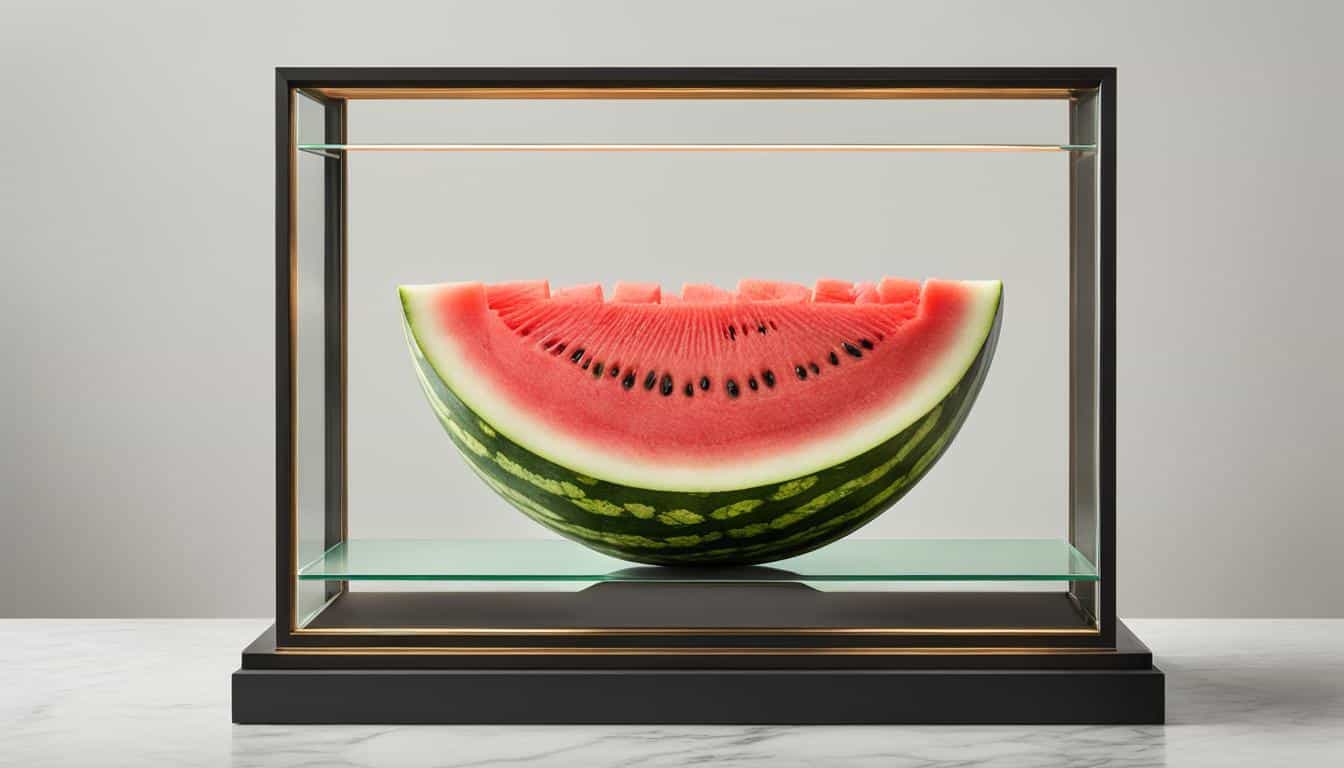



Leave a Reply